I will start this journal by thanking the DL committee chaired by Dr. Mauricio Sacchi of University of Alberta and the CSEG Executive for selecting me as the first-ever Canadian SEG Distinguished Lecturer. This is a real honour and I promise to do my best to represent the high level of geophysical savoir and professional fervour of the CSEG membership! My selection also proves that in spite of moving in the fall of 2003 from Calgary to St John’s, Newfoundland and Labrador and from Industry to Memorial University, I was not forgotten by my colleagues, which feels good. I also understand that one of my duties as lecturer is to prove that our society has a diverse membership and is represented across the country. During my tour I will try hard to sign new members from other-than- Alberta locations, to particularly attract young geophysics students to join our fold and, whenever possible, to convert a few geologists to our better profession!
The first leg of the 2006 CSEG Distinguished Lecturer Tour targeted the Atlantic Provinces and took place during October/November 2005. The tour started with a presentation delivered at the 2005 Newfoundland Ocean Industries Association (NOIA) fall seminar held on October 26 in St John’s, Newfoundland. The main topics of the workshop were related to 1) possible development of the Hebron oil field and 2) potential production from large gas reservoirs such as White Rose, Hibernia and Bjarni complex. My presentation was entitled “Energy-In- Waiting: Discovered Reserves and Exploration Potential for Gas in Newfoundland & Labrador” (available from http://www.noianet.com/fallseminar2005/). I described the history and location of the approximately 16 TCF of gas resource discovered during four decades of exploration offshore East Coast of Canada, emphasizing the future potential of the Grand Banks, Orphan Basin and Labrador Sea. There was much debate on ways to monetize this gas, but in my opinion we are at least 7-8 years away from gas development and transportation of any energy-in-waiting fro m offshore Newfoundland and Labrador. Evidently, continuous high commodity prices and new sizeable discoveries may bring the stranded gas to shore sooner. The seminar was sold out and I estimate that over 300 engineers, business professionals, petroleum and service company managers, geoscience professionals and students were in the audience at this workshop including such CSEG stalwarts as Doug Bogstie of WesternGeco and Paul Einarsson of GSI. Paul also made a seminar presentation entitled “Seismic Activity in Labrador: Why?” while Doug made the local papers discussing Western-Geco’s most successful, three–boat 2005 season offshore Newfoundland.

During early November, I went on the Nova Scotia university circuit together with John Hogg of Burlington Resources, (now Conoco Phillips), who is this year’s Special Lecturer, CSPG Outreach Program for Atlantic Canada. We have joined forces to present a two hour talk entitled “Overview of Petroleum Exploration and Development Geoscience: Future Opportunities for Earth Science Graduates in Canada”. Nova Scotia has the highest number of universities per resident of any Canadian province: 11 universities and a province-wide college with 13 campuses. We were only scheduled to lecture at 4 Nova Scotia universities, and because of time constraints, to do it in two and a half days! We agreed that what is most needed for the province’s geoscience students is an overview of both offshore and Western Canada industry activity, including seismic and drilling, and also a presentation on what it takes to make a good petroleum geophysicist or geologist in the context of increased demand for oil and gas and depleting reserves from conventional reservoirs on land.

After flying to Halifax, John from Calgary, and me from St John’s, we met at the airport, drove to town and had to labor on the talk, first in the hotel and then at the Granite Brewery. Halifax’s Granite Brewery is a well known watering hole frequented by the local geoscience professionals, where they serves crudes with name such as Peculiar (specific gravity 1056°) and Keefe’s Irish Stout (1052°). That evening we also exchanged some recollections from the early days of frontier exploration and had some heated debate on “what-went-wrong?” concerning the last round of Nova Scotia drilling with our CSPG member and friend Dave Brown from Canada-Nova Scotia Petroleum Board.
Next morning we had a 2-hour drive on a splendid, sunny and warm fall day to Antigonish. While John was driving (always within or close to speed limit), I continued to work on my laptop, fine tuning our presentation and agonizingly dropping quite a few slides to cut down the size of our Power Point from the 300 slides that we prepared to about 190! Our lecture was constructed to contain sections on Reflection Seismic Fundamentals, Land and Marine Seismic, Data Interpretation, Exploration and Development Geoscience in Western and Atlantic Canada, Conventional and Non-Conventional Plays and Drilling, Energy Needs of the 21st Century and Future Opportunities for Geoscience Graduates. This Geoscience “tour de force” was planned to last for 2 hours, have us alternate as presenters and even theatrically play the roles of geophysicist and geologist colleagues debating different concepts and teasing each other on the solidity of our arguments. We chose this format to be able to keep the audience focused and at the same time entertained during what was a long lecture fully loaded with novel geoscience notions, complex information and our best illustrations. To end our talk, we had a long list of acknowledgements as some of the slides were selected from past co-authored meeting presentations or given to us by CSEG or CSPG members of the Calgary and St John’s geoscience communities.
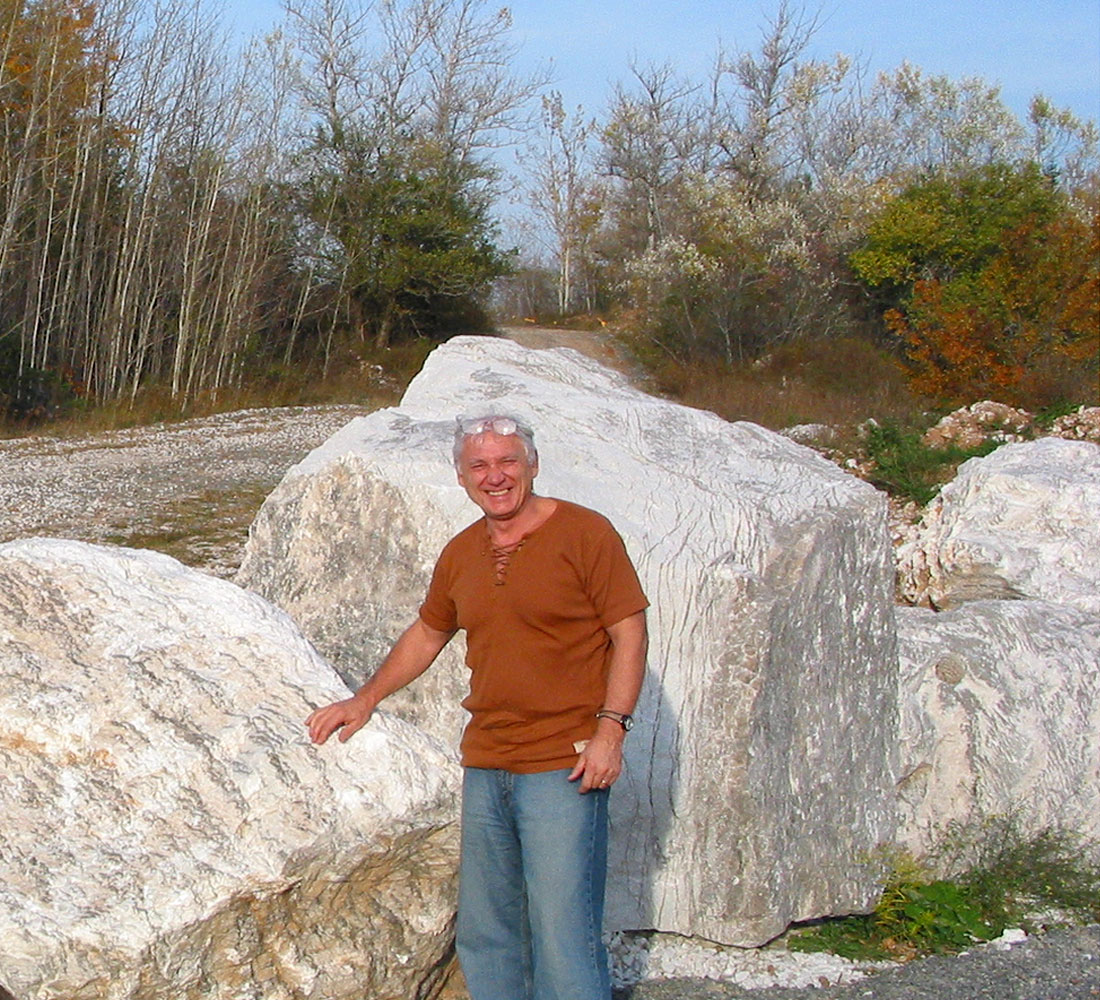
We first experimented with our presentation format at St Francis Xavier University, where we lectured to the students and professors of the Earth Science Department. Antigonish is one of Canada’s best known university towns, located in the northwestern corner of Nova Scotia in the Highland country. Antigonish is a Mi’kmaq name that according to the town website may mean either “meeting place of five forked rivers” or “the place where the branches are torn off by bears gathering beechnuts”! The University was founded in 1853, and geology/earth sciences has been taught there since 1899. We were hosted by Dr. Michael Melchin, Department Chair and Dr. Brendan Murphy, Professor of Structural Geology and Tectonics in the Department of Earth Sciences. The Department has 8 faculty members, all conducting research, 4 laboratory supervisors, 16 graduate students, and 2 post-docs. There are 30 undergraduates enrolled and every year they graduate an average of 12 students per year with a B Sc (Earth Sciences). Our presentation went well considering that we had no time to rehearse, and we had quite a few questions from students very interested about possibilities of employment in the oil patch. From our conversations during an early coffee break and later pizza lunch, we understood that many of their graduates have found employment in the oil patch, but some only after a contorted career start, as oil or service companies usually do not recruit there, and contacts with professional societies are rare (see attached letter).
A similar story was told to us by members of Acadia’s Department of Geology that we visited in the afternoon of the same day. On the way to Wolfville, we were impressed by the stunning colors of the fall in Nova Scotia’s forests, fields and orchards and by the muddy texture of the numerous tidal flats. We made the obligatory stop at the Gypsum quarry near the city of Windsor and took samples and pictures of these Carboniferous Windsor Group beds. It is interesting to note that Nova Scotia produces 25% of the words gypsum needs, covers 75% of USA demand and has the largest gypsum mine in the world at Milford. Gypsum is an inert substance used mostly for wallboards in homes.

Our hosts from the Department of Geology at Acadia University were Dr. Robert Raeside, Head and Dr. Sandra Barr, Professor and past- president of the Geological Association of Canada. Sandra just returned from a student field trip before the start of our lecture as Acadia is situated in an area of varied geology with good exposures nearby. The department has 10 full- or part-time academic and technical staff and graduates about 12-15 B.Sc. and M.Sc. students a year. From their excellent website we learned that 15% of their graduates went to work in Alberta and 15% in Atlantic Canada. The talk at the University Club was attended by about 25 students and a few professors. As it was late afternoon, we interrupted our presentation for a beer and pizza break. Discussions again revealed the high interest of students for jobs in the petroleum sector and also their sense of not receiving more attention from Calgary-based companies and professional societies.
In the evening, we had a fish and scallops dinner in the historic Blomidon Inn, which we warmly recommend to all colleagues working or having children attending universities in Nova Scotia. We went for a brief walk to the town center on a windy evening; regrettably by the time we went to the local micro-brewery (very trendy with the Acadia crowds), they were sold out of their most popular brands. We had a half pint of some light amber and retreated early to bed in our rooms with late 19th century ambiance and high-speed internet.
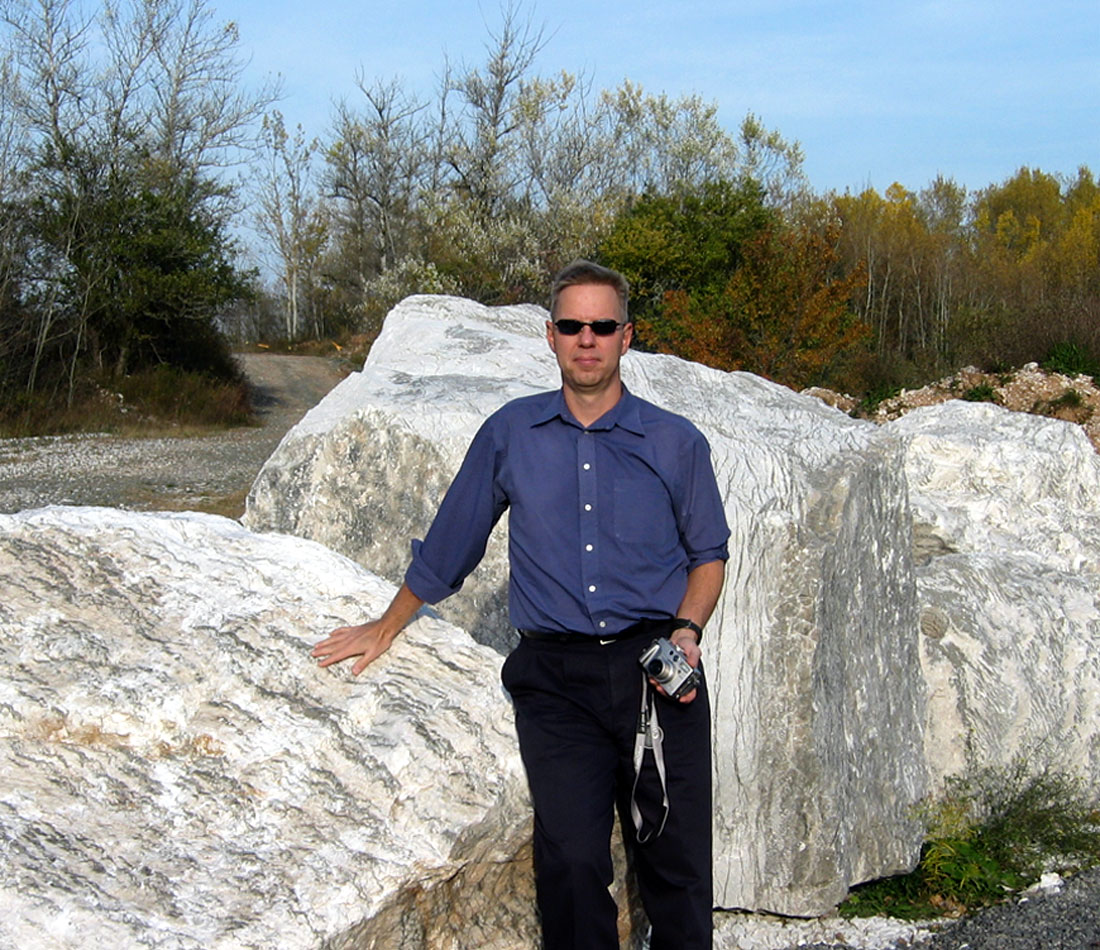
Located on a hill with its various buildings facing the Bay of Fundy, Acadia University has one of the most picturesque locations of all Canadian Universities. After we took a few classic “fall in Nova Scotia” pictures, early in the morning of 2nd November we drove back to Halifax. John badly needed a coffee so he stopped in Windsor, a town advertised as the Birthplace of Hockey (around 1800) and Howard Dill’s Giant Pumpkins Festival (still missing Ms. Martha Stewart). While John had his morning Tim’s brew in the car, I saved myself for a Starbucks’ in Halifax. The strong coffee was needed in Halifax as we had quite a reception at both Dalhousie and Saint Mary’s universities, with many discussions with the students and academic staff.
Our host at Dalhousie was Dr. Grant Wach, Professor and Director of the Energy at Dalhousie, who kindly received us in the best “penthouse” geology hall we ever seen (a remodeled hot-house), with a fantastic view of the Atlantic. Dalhousie was founded in 1818 and has become an important center for the study of Atlantic Offshore geosciences with over 20 faculty/staff in Earth Sciences. The department is closely aligned with the world-renowned Oceanography Department.
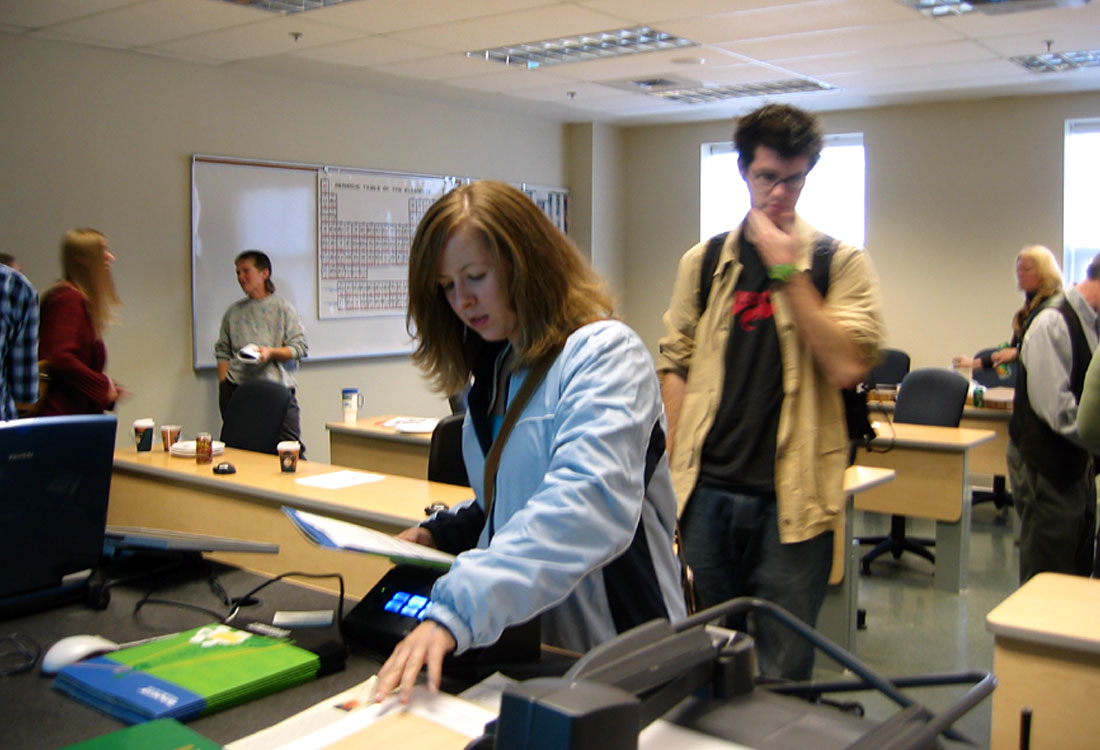
The presentation on the geoscience student opportunities in Calgary’s oil patch got quite a reaction, with John receiving immediate requests for information on job opportunities. Not to be outmaneuvered, I made a strong pitch for CSEG, geophysics jobs in Calgary and St John’s, and also for graduate studies at MUN (could not resist)! Expectedly, the morning session at Dalhousie ended with the delivery of pizza to fuel students and lecturers.
At Dalhousie, I also visited the Analogue Modeling Laboratory, a new facility headed by Dr. Juergen Adam. I was impressed with the similarity between his colorful layered models, including silicone (!) diapirs, and the style of seismic sections interpreted across the Nova Scotia and Grand Banks margins.
Both Dalhousie and Saint Mary’s are known for their strong Earth Sciences departments and the quality of their graduates. In the past few years a strong emphasis has been placed on research and graduate thesis work related to Nova Scotia offshore and petroleum basin topics.

Early in the afternoon we drove to Saint Mary’s University, in existence for more than 2 centuries and the place of an equally celebrated Geology Department. Here we had a full room-audience (about 80 people) with students and professors from both universities as well as federal and provincial government geoscience professionals including CSEG member Chris Jauer and several CSPG and GSC members. Dr. Andrew MacRae from St Mary’s, an active researcher in the sedimentary basins onshore and offshore Nova Scotia, was our host and introduced us to the audience. This was the best attended lecture and the Haligonian students were the most inquisitive regarding future geoscience opportunities in the petroleum industry and the future of exploration offshore Nova Scotia.
The final leg of the trip, John went solo to the University of New Brunswick, in Fredericton, due to a teaching commitment I had at Memorial. Dr. David Keighley and Dr. Karl Butler were wonderful hosts and John and David went to Brewbakers, a Fredericton institution, for dinner and discussed the concerns of the industry with the baby boomer bubble. Fredericton, located on the Saint John River, goes back to the 1700s and the University is more than 200 years old. The Geology Department has 10 permanent professors, more than 14 seasonal, adjunct, research associates and emeritus staff and approximately 30 graduate students. The department lists an original undergraduate program in Geol-Physics (!) and has graduate studies in Applied Geophysics. The undergraduates and graduate students warmly welcomed John, and he worked his way through the entire two hour presentation, including most of the geophysical portion (the part without math or hard physical concepts). No doubt he is a geologist and manager that can be trusted with geophysical statements as he spent some 25 years working in Frontier, Foothills and WCB New Ventures departments. Well done John! To repay the favor, I promised to give our common lecture, early in 2006, to the students at Memorial, saving him an extra trip to the East on Air Canada’s hospitality class.
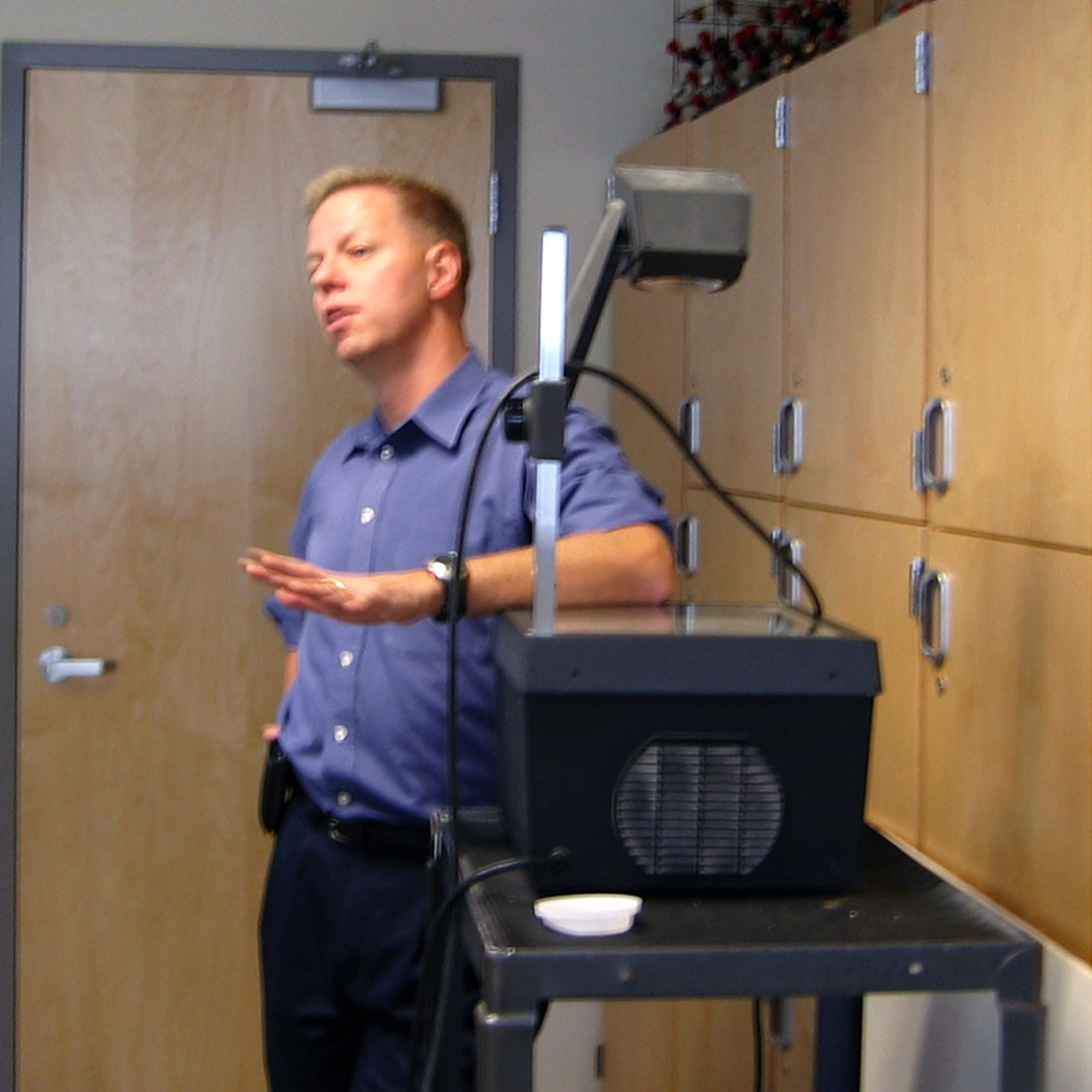
John and I believe that our presentations were very well received by the undergraduate and graduate students, attending academics and petroleum professionals across the provinces of Newfoundland and Labrador, Nova Scotia and New Brunswick (see comments below). We tried to answer many questions regarding offshore and onshore exploration, geoscience professions and the exploration societies that sponsored our lecture tour. Obviously, I presented petroleum geophysics as an exciting profession that required multidisciplinary knowledge, continuous learning, passion and imagination and demonstrated that our profession has a great future in Canada and internationally; I distributed CSEG flyers and membership applications and provided the departments with the “Depth Imaging of Foothills Seismic Data” 50th Anniversary commemorative volume (edited by Lines et al., 2000) provided to me by our Society.
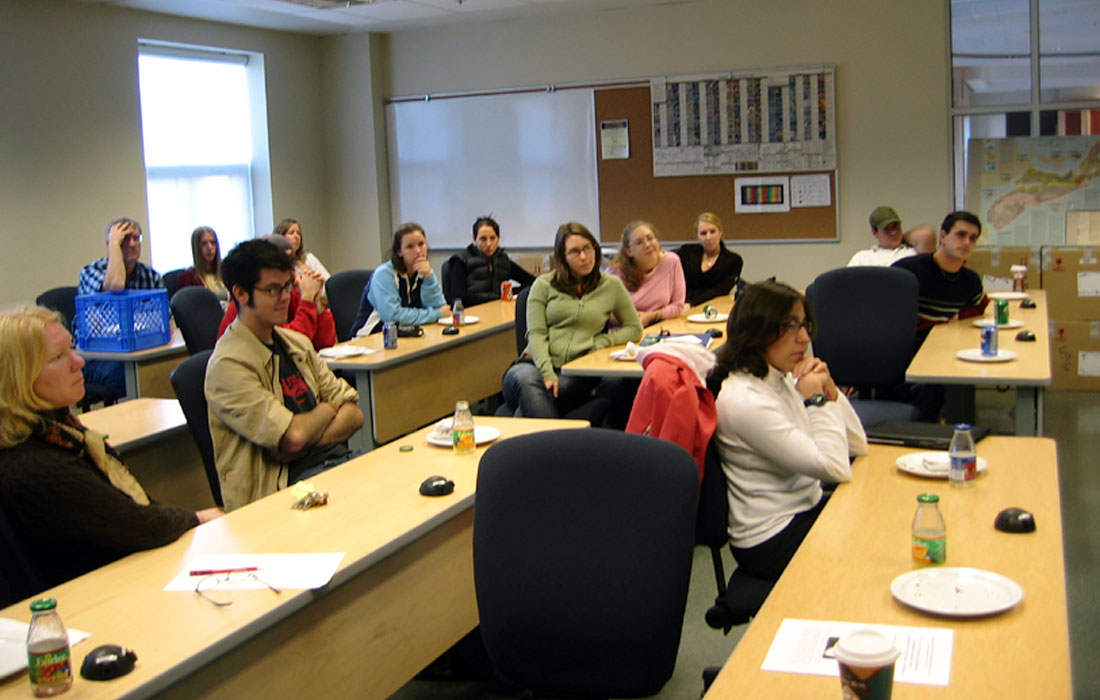
Lucky, my Toshiba Satellite laptop (courtesy of Pan-Atlantic Petroleum Systems Consortium at Memorial) performed without a glitch, in spite of running a Power Point presentation of 250 Megs (including some wicked animations) and being handled in the plane, car and various pubs and violently dropped a few times during the rushed travel around the provinces. Irregardless of the packed schedule and intensive work, we felt great connecting with different geoscience departments, conversing with enthusiastic students and advising them to join our societies. We found the students to be just as diverse and as keen as we were when young. They need guidance and more information on employment in the petroleum business as geologists and geophysicists. I believe that more geophysics academics are needed to teach at the various universities we visited and more geophysics students need to be trained in the Atlantic Provinces. During the tour, we also reconnected with some older colleagues, made new friends and learned a lot about the places we saw and the programs at the diverse universities we visited. An important recommendation we made is to insure that all geoscience departments will post links to both CSEG and CSPG on their websites. We promised to return with more lectures and to keep in touch with the students that showed most interest in joining the societies and the petroleum industry. We returned to our busy work schedules with ideas on improving our lecture, with plans to replicate the tour in the spring on the West Coast and (after treating students to lunch/diner for three straight days), with the decision to renounce pizza for the remainder of this university year!
Here are several extracts from e-mail letters received by us after the tour.
“John, Michael: Thanks so much for your enthusiastic and inspiring presentation yesterday. My structural students volunteered that it was very informative and helpful. I think several of them will be looking for work in Calgary this summer, and this year 4 out of that 10 are exceptional (I can’t remember such a year for a while). I know both of you are extremely busy, so I (and the department) appreciate that you included St FX as a stop in your tour. We are also grateful to the CSPG and CSEG for sponsoring the trip. Too often, organizations whose name includes the word “Canada” or “Canadian” forget that rural communities also live in Canada! Thanks to you and to the CSPG and the CSEG for making sure your organization lives up to its name”.
“The breadth of the lecture, from the WCSB through offshore Atlantic Canada was impressive and the rapt attention from the students demonstrated their keen interest in the subject material. I would like to acknowledge the CSPG and CSEG for their kind support of the lecture series and would encourage the sister societies to continue their sponsorship. Thanks!”
“… it is fair to say that student reaction was very positive from both undergraduate and graduate students. Several of them commented to me afterwards that you and John did a great talk, and I think it speaks to their interest that most of them stayed for the entire ~2 hours that you two were speaking — their attentiveness matched your stamina.”











Join the Conversation
Interested in starting, or contributing to a conversation about an article or issue of the RECORDER? Join our CSEG LinkedIn Group.
Share This Article